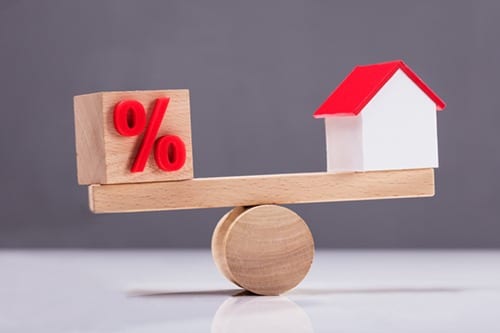702-660-7000
702-660-7000

Anybody can lend money, but typically lenders are banks, credit companies like Visa, MasterCard and American Express, or retail stores that offer an in-store credit card. The rate of interest that is charged by these lenders can vary widely depending on the type of loan, the credit history of the person (business) applying for the loan and the current interest rate that the Federal Reserve is charging lenders.
Many believe that lenders earn more when interest rates are high. And this, at first glance, might appear possible but it isn’t necessarily logical. If a lender has access to money at 4% and lends it out at 8%, they get to keep 50% of what they charge for the loan. But if a lender pays 1% for money and they lend it out at 3% then they get to get keep 66% of what they charge for the loan. For this reason, higher interest rates don’t always mean higher profits for the lender.
This is important for you to grasp when you lend money to others or to yourself. Simply charging a higher interest rate doesn’t mean you will earn higher profits. You must always calculate the percent change of what you pay versus what you will receive.
If you leverage your Participating Whole Life Insurance Policy and have to pay 8%, like some insurance companies charge for a policy loan, then you will need to earn a much higher return to make the policy loan worthwhile. Regardless of what the dividends or the internal rate of return in the policy might be, you must determine if an 8% loan is cost effective for you.
On the other hand, if you can access money from and insurance company by leveraging your Participating Whole Life Insurance Policy at 4% to 5% interest, then your required return on the capital borrowed will be lower and therefore, more likely to be profitable for you. That is because earning 8% will easily return you a profit, while earning 8% on money from a policy loan that charges 8% will make your job of returning a profit more difficult.
This is why learning to think in percent is so important to building sustainable wealth. Interest rates are used to measure the cost of money. But there is a huge difference between interest earned and interest paid. And that is why using debt wisely can be your biggest asset. Debts are certainly assets for banks, credit card companies and the big retail stores. Debt can work in your favor, if you know how to manage it. Why shouldn’t it be an asset for you?
Let’s say you are buying a house. The mortgage is $250,000 at 4% (annual percentage rate) for 30 years. That means your monthly mortgage payment will be $1,205 (without any escrow fees, points or additional fees). This means you will end up paying, over the next 30 years, $433,800, if you stay in that house and pay it off. And that means 42% of that $433,800 will have been paid in interest, not merely 4%.
Someone tells you that by making additional monthly payments on your mortgage you can pay it off faster, saving you a large portion of that interest. So, you increase your monthly mortgage payment by $668.77 a month and you end up paying your house off in 15 years. That means you only paid $337,279, which appears to have saved you $96,521 of interest.
But here is the bottom line that you need to understand. If you took that $668.77 each month for the next 15 years and earned 3% on it, which is 1% less than your mortgage interest is costing you. You will end up having $151,793 which is $55,272 more than what you could have saved on interest, paying your mortgage off early.
If that $151,793 keeps earning 3% for the next 15 years, you will have accumulated $236,489. Of course, if you had paid your house off in 15 years and saved the $96,521 of interest you could earn 3% on it just as easily as you can the $151,793. But $96,521 earning 3% for 15 years only provides you with $150,377 not $236,489! And so it would be better NOT to pay your house off early because $433,800 – $236,489 = $197,311 while $337,279 – $150,377 = $186,902, which is 5.57% less money in your pocket 30 years down the road.
As the internal rate of return in Participating Whole Life Insurance (PWLI) policy over 30 years easily provides at least a 3% or more, the best place to keep your extra $668.77 every month is purchasing PWLI. Not only will this provide liquidity for you over the years but it will also provide the protection needed to pay off your house if you are not there to do so for your family.
Einstein is reported to have said that, “Compound interest is the eighth wonder of the world.” So, stop trying to avoid paying all that interest on your 30 year mortgage and start allowing compounding interest to work for you by purchasing PWLI with the extra money. Because interest really does matter.